The views expressed in our content reflect individual perspectives and do not represent the authoritative views of the Baha'i Faith.
The oldest continually-inhabited settlement in North America is the Acoma Pueblo – “Sky City,” also known as “Haaku” — located some 60 miles outside of Albuquerque, New Mexico.
Those pueblos – houses made of stone, adobe, and wood, some of them still standing today – began being built there between 1100 and 1250 C.E., when Europe was still in its Dark Ages. Acoma Pueblo was built atop a massive, isolated and imposing 357-foot sandstone mesa called Acoma Rock, a unique geographic wonder and a National Historic Landmark.
The Acoma, known as the “People of the White Rock,” still venerate their sacred traditions, including the divine messenger sent to them long ago. Her name was Iyatiku (or Iatiku), which means “Corn Woman.”
Q: Kevin, is this Indigenous messenger of God similar to the “Mother Corn” of the Arikara or Sahnish people, who we previously wrote about in Part 81?
A: Yes, Chris. Corn is ubiquitously regarded as a divine gift, so universal and symbolic attributions of this divine origin exist in many Faith traditions. The Baha’i teachings even refer to it that way, as in this letter from Abdu’l-Baha to Dr. George Augur, an early Baha’i, comparing sowing seeds of corn to illuminating souls with the divine message:
These few seeds of corn that ye have sown in that soil shall lead to luxuriant crops, this limited number of souls will be converted into great cohorts, nay, rather into an imposing spiritual army, and that seed, under the Divine Direction, shall yield abundant and heavy clusters.
RELATED: Does Progressive Revelation Include Indigenous Messengers of God?
Several decades ago, the revered elder Gerald Red Elk made an interesting linguistic observation regarding the Lakota/Dakota “corn dance”or “huŋka” ceremony in which the “making of relatives” is consecrated through ritual adoption of children.
The corn symbolizes the children who, when nurtured by the gentle breezes of love, the tender rain of care and compassion, the sun of truth and all divine virtues, will in turn produce the spiritual fruit that will bless and enrich all people transcending the limitations of language, culture, and ethnicity.
The linguistic connection observed by Mr. Red Elk starts in South America with the Inca and goes through several linguistic permutations as it comes north, changing to “Hako” with the Pawnee, “Hanga” with the Omaha and Ponca, and finally “Hunka” with the Lakota. He further observed that this linguistic connection follows the sacred journey of corn from south to north and represents the pervasive female foundational centeredness so characteristic of the matrilineal dominant in the Indigenous Western Hemisphere.
Q: Fascinating! So did Iyatiku or Corn Woman and Mother Corn give corn as a divine gift to their respective peoples? How can we know more? Isn’t corn a naturally occurring plant? If so, then how and why is corn considered a gift from the Creator?
A: In Psalm 78, the Bible talks about corn from heaven: “And had rained down manna upon them to eat, and had given them of the corn of heaven.” So, in this sense, corn is sacred. It’s a divine gift. That said, corn or “maize” as it was once known, is dependent on human care, attention and love at every stage of its growth and development. This is why it is always associated with the nurturing of the human spirit. In this way it is intimately bound to the love of God and His messengers.
Q: Kevin, in the fall of 1928, Edward Proctor Hunt retold the creation and migration story of Acoma Pueblo in western New Mexico to scholars at the Smithsonian Institution’s Bureau of American Ethnology in Washington, DC. This is the fullest and lengthiest Pueblo origin story ever recorded by American anthropologists. The narrative was first published in 1942 by the U.S. Government Printing Office as “Bulletin 135 of the Bureau of American Ethnology,” under the title, Origin Myth of Acoma and Other Records.
Oddly but not surprisingly, Edward Proctor Hunt – the Indigenous narrator (or “informant,” as anthropologists used to say) and his assistants were not named. Instead, Dr. Matthew W. Stirling was the author of record. As the recently appointed “chief” of the Bureau of American Ethnology, archaeologist Stirling transcribed the myth, with assistance from a young visiting British anthropologist, Dr. C. Daryll Forde.
The narrator, Edward Proctor Hunt, who was 67 years old at that time, was born and raised in Acoma Pueblo country. His native name was “Gaire,” meaning “First Light of Dawn,” or “Day Break.” He took his American name from a book he found in a suit of clothes in which someone had written that whoever found the book could take that name. He was later known as “Chief Big Snake.” One of his sons, Henry Wayne “Wolf Robe” Hunt, translated for him. A younger son, Wilbert Edward “Blue Sky Eagle” Hunt, assisted with translating the sacred Acoma songs that were an integral part of the myth. Mr. Hunt’s wife, Marie “Morning Star” Valle Hunt, and Philip “Silvertongue” Sanchez, originally from Santa Ana Pueblo, assisted in this important legacy project.
The 1942 publication of the Acoma Pueblo creation and migration story attributed the work only to “a group of Pueblo Indians from Acoma and Santa Ana visiting Washington [in the fall of 1928].” Nameless at that time, Edward Proctor Hunt was not forgotten. The 2015 Penguin Classics edition gave full credit, as should have been done back in 1942.
So Kevin, how important are anthropologists – and their so-called “informants” – to the preservation of Indigenous sacred history? In a previous article, you said that some Indigenous narrators gave misinformation, on purpose, to avoid revealing their true sacred traditions and beliefs. So how can we tell if a given anthropological or ethnographic record is authentic and accurate?
A: My personal belief is that the anthropological and ethnographic records are extremely valuable — even if the lens of the documenter was skewed, tainted, and/or prejudiced. With our current access to the existing oral traditions and modern expanded insights, we can use the light of that knowledge to discern truth from fiction and arrive at an enhanced understanding. One way to tell truth from fiction is to ask the question, “What truth is in this fiction?”
RELATED: How Did Indigenous Americans Get There?
Q: Kevin, here’s what Edward Proctor Hunt says, in brief, about Iyatiku or Iatiku, Corn Woman, who during the prehistoric period known as the Anasazi culture, not only created the Acoma physical and spiritual world, but their cultural world as well. Corn Woman provided the Acoma’s first houses, plaza, and kivas – the sacred spaces and chambers, wholly or partly underground, for religious rites by male Pueblo people. She also provided not only the sacred places, but the Pueblo social identity, spiritual principles, ethical precepts, religious practices, political institutions, survival skills, and rituals for healing. As part of this sweeping dramatic arc, Day Break narrates the story in Edward Proctor Hunt’s The Origin Myth of Acoma Pueblo:
At this time Iatiku lived alone in a house on an island in a lake. She lived here and the people lived all around her. But only Country Chief visited her. While getting his instructions for making the altar, he ran back and forth to the island. Then Country Chief passed them on to Oak Man. …
Iatiku made her fetish with the ear of corn in the center. Into the hollow in the bottom of the cob she blew her breath. This meant her own power, for she had blown her heart, or soul, into it. She added some honey into the hollow as food for her breath. Honey comes from all kinds of plants and stands for all plant foods. Putting it in the cob also meant that it would be the seed or source for all food to come. Then she stoppered the cob with cotton and wrapped it in four layers of corn husk.
Now Iatiku took the skin of the duck’s head and a turquoise and laid them under the corn, as its seat. Over the top and around the outside husks she spread cotton. The duck skin with blue feathers was placed under the turquoise because the color was similar. From now on the turquoise was going to have a lot of power, the power to make one attractive and be loved.
The breath that Iatiku blew into the cob would be powerful as far as the air extended, but no farther. She used roadrunner, magpie, eagle down, and turkey feathers … and the down from under the eagle’s tail. From then on these feathers were to be useful in making prayers.
Kevin, would you like to comment on this passage?
A: Yes – when we view the intricate details of this ceremonial way, we realize that the essence of the narrative is that each detail represents the physical counterpart to its spiritual reality. That’s what sacred symbols are all about. Iatiku taught what is “useful in making prayers.” That’s the main take-away here, and it shows conclusively, once again, the depth and profundity of the teachings of the Indigenous messengers of God.
You May Also Like
Comments



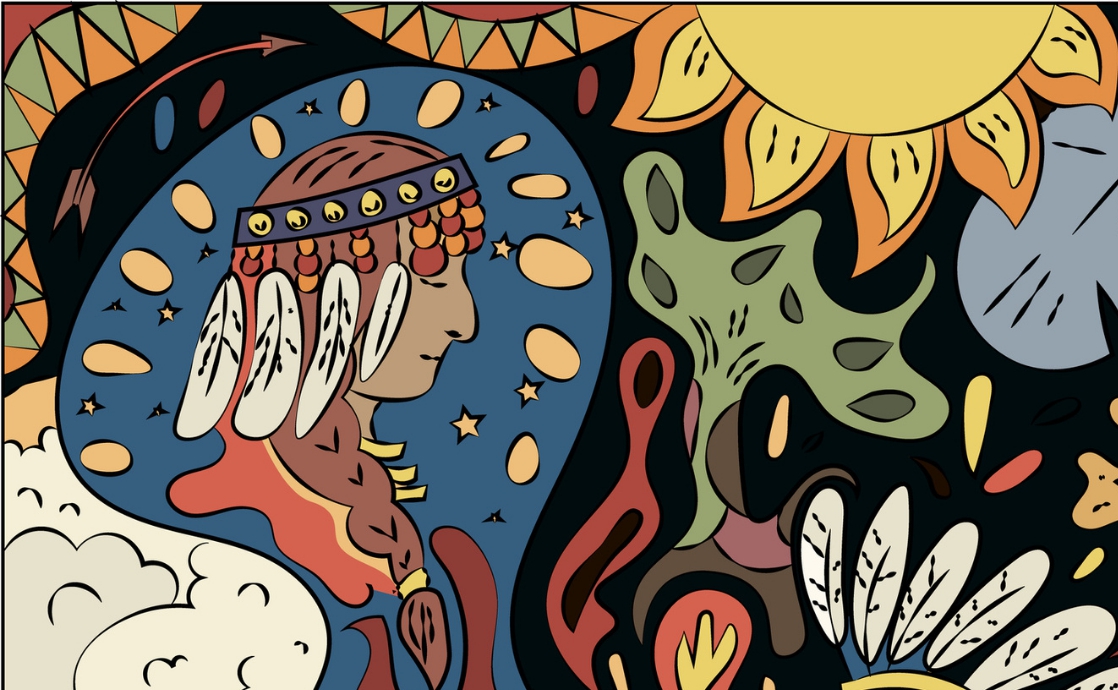

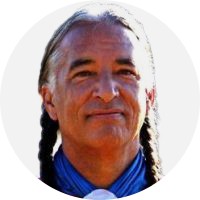
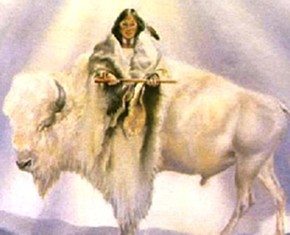


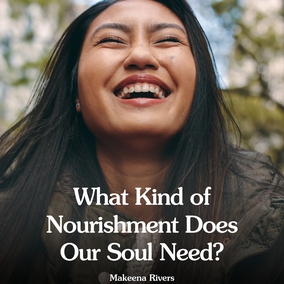


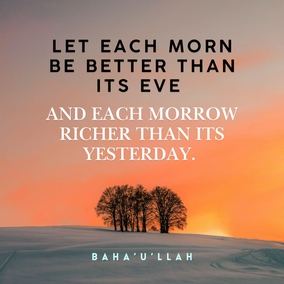
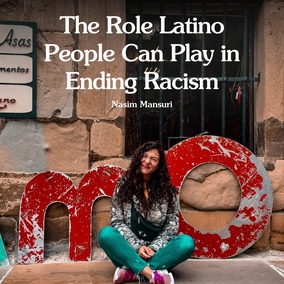




I was so taken by this article where Iyatiku-Corn Woman was revered as a Manifestation of God. Also loved your last comment Kevin about seeing what truth might lie in fiction as it relates to anthropologists who were for the most part guessing the meaning of these sacred stories. I love the collaborative effort!